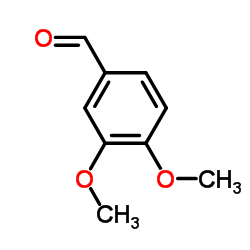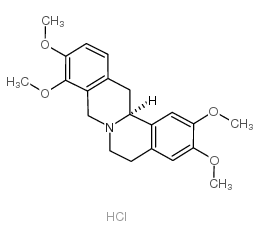| Description |
Rotundine is an antagonist of dopamine D1, D2 and D3 receptors with IC50s of 166 nM, 1.4 μM and 3.3 μM, respectively. Rotundine is also an antagonist of 5-HT1A with an IC50 of 370 nM.
|
| Related Catalog |
|
| Target |
IC50: 166 nM (D1 receptor), 1.4 μM (D2 receptor), 3.3 μM (D3 receptor), 370 nM (5-HT1A)[1]
|
| In Vivo |
It is reported that Rotundine (l-THP) possesses a blocking effect on dopamine D1 and D2 receptors and can inhibit physical dependence in morphine dependent mice and significantly reduce the development of the conditional place preference induced by morphine in mice. On day 1 and 7, there is no difference in locomotor counts between the Rotundine groups (6.25, 12.5, and 18.75 mg/kg) and saline group [F(3, 37)=1.360, P>0.05, F(3, 37)=0.348, P>0.05, respectively]. Locomotor counts are greatly increased in the oxycodone group compare with the saline group. Rotundine at doses of 6.25, 12.5, and 18.75 mg/kg antagonizes hyperactivity induced by oxycodone [F(4, 60)=15.76, P<0.01]. Rotundine (6.25, 12.5 mg/kg) does not affect the magnitude of sensitization, but there is a marked difference between oxycodone+oxycodone group and Rotundine (18.75 mg/kg)+oxycodone+oxycodone group, indicating that Rotundine (18.75 mg/kg) greatly inhibits the development of oxycodone sensitization [F(4, 62)=8.766, P<0.01][2].
|
| Animal Admin |
Kunming mice, initially weighing 18 to 22 g are used in this study. Four groups of mice are given Rotundine (l-THP) (6.25, 12.5, and 18.75 mg/kg) or saline, respectively, once per day for 7 consecutive days, followed by a 5 d withdrawal period. On d 13, all animals are challenged with saline. On day 1, 7, and 13, after 40-min treatment with Rotundine or saline, the mice are put into the test boxes and locomotor activity is monitored for 60 min[2].
|
| References |
[1]. Wang JB, et al. l-tetrahydropalamatine: a potential new medication for the treatment of cocaine addiction. Future Med Chem. 2012 Feb;4(2):177-86. [2]. Liu YL, et al. Effects of l-tetrahydropalmatine on locomotor sensitization to oxycodone in mice. Acta Pharmacol Sin. 2005 May;26(5):533-8.
|

 CAS#:50-00-0
CAS#:50-00-0![(13aS)-2,3,9,10-tetramethoxy-5,8,13,13a-tetrahydro-6H-dibenzo[a,g]quinolizin-5-ol Structure](https://image.chemsrc.com/caspic/258/870282-81-8.png) CAS#:870282-81-8
CAS#:870282-81-8![[1-(3,4-dimethoxyphenyl)-meth-(1E)-ylidene]-((2R)-2-methoxymethylpyrrolidin-1-yl)-amine Structure](https://image.chemsrc.com/caspic/227/870282-77-2.png) CAS#:870282-77-2
CAS#:870282-77-2 CAS#:870282-79-4
CAS#:870282-79-4 CAS#:870282-78-3
CAS#:870282-78-3 CAS#:70945-99-2
CAS#:70945-99-2 CAS#:120-14-9
CAS#:120-14-9 CAS#:870282-80-7
CAS#:870282-80-7 CAS#:870282-71-6
CAS#:870282-71-6 CAS#:2506-20-9
CAS#:2506-20-9